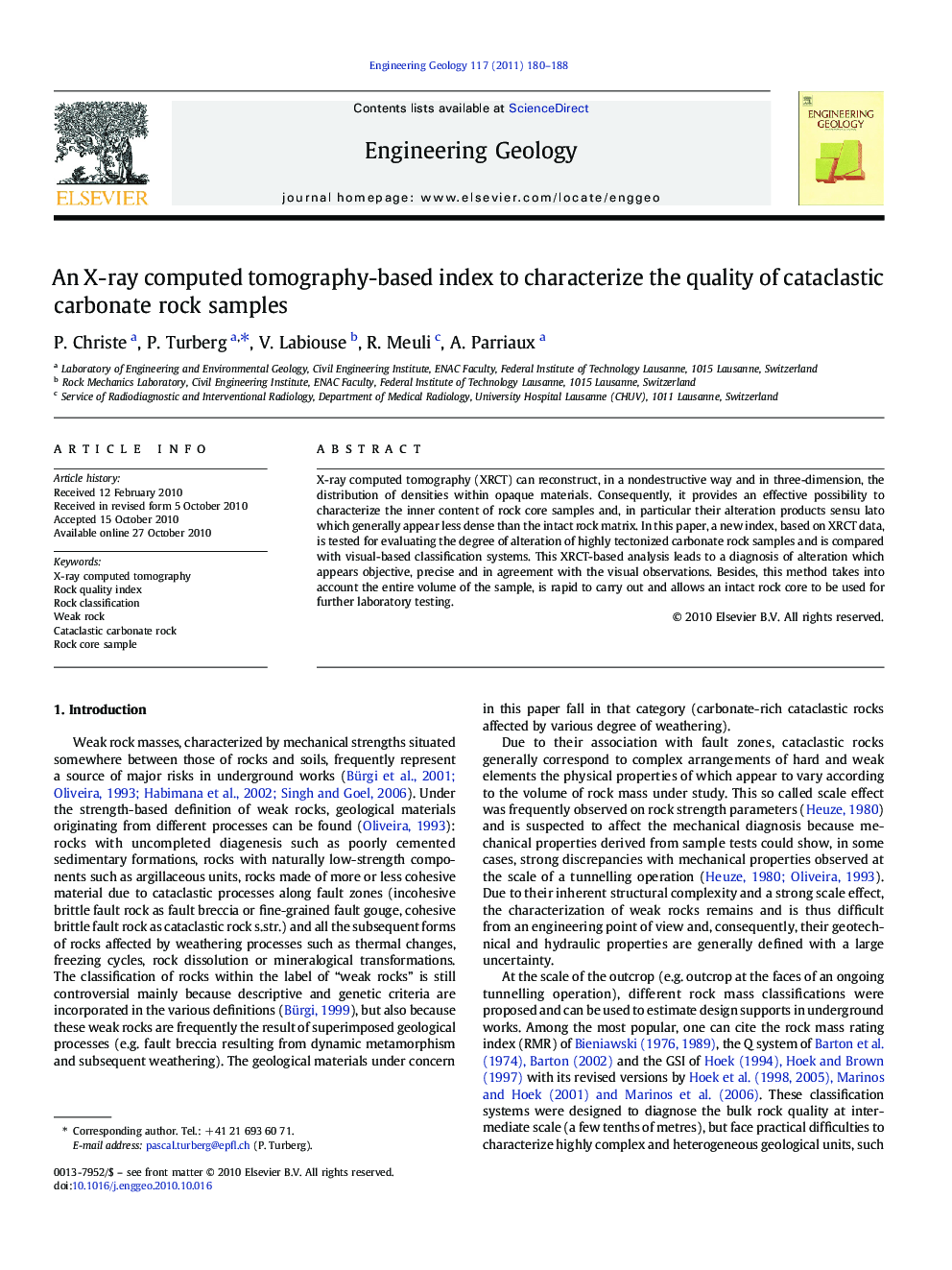| Article ID | Journal | Published Year | Pages | File Type |
|---|---|---|---|---|
| 4744231 | Engineering Geology | 2011 | 9 Pages |
X-ray computed tomography (XRCT) can reconstruct, in a nondestructive way and in three-dimension, the distribution of densities within opaque materials. Consequently, it provides an effective possibility to characterize the inner content of rock core samples and, in particular their alteration products sensu lato which generally appear less dense than the intact rock matrix. In this paper, a new index, based on XRCT data, is tested for evaluating the degree of alteration of highly tectonized carbonate rock samples and is compared with visual-based classification systems. This XRCT-based analysis leads to a diagnosis of alteration which appears objective, precise and in agreement with the visual observations. Besides, this method takes into account the entire volume of the sample, is rapid to carry out and allows an intact rock core to be used for further laboratory testing.
Research Highlights►New quality index to characterize the degree of alteration of rock samples; ►Developments of X-ray computed tomography in rock engineering; ►Quantitative microstructural analysis of rock core samples.
